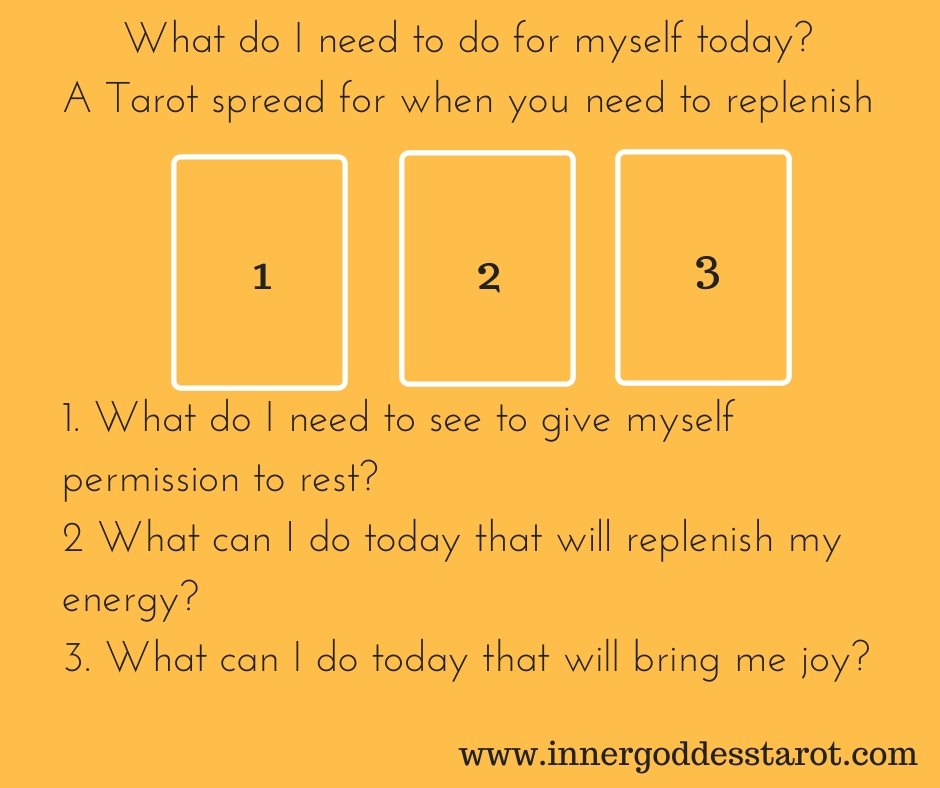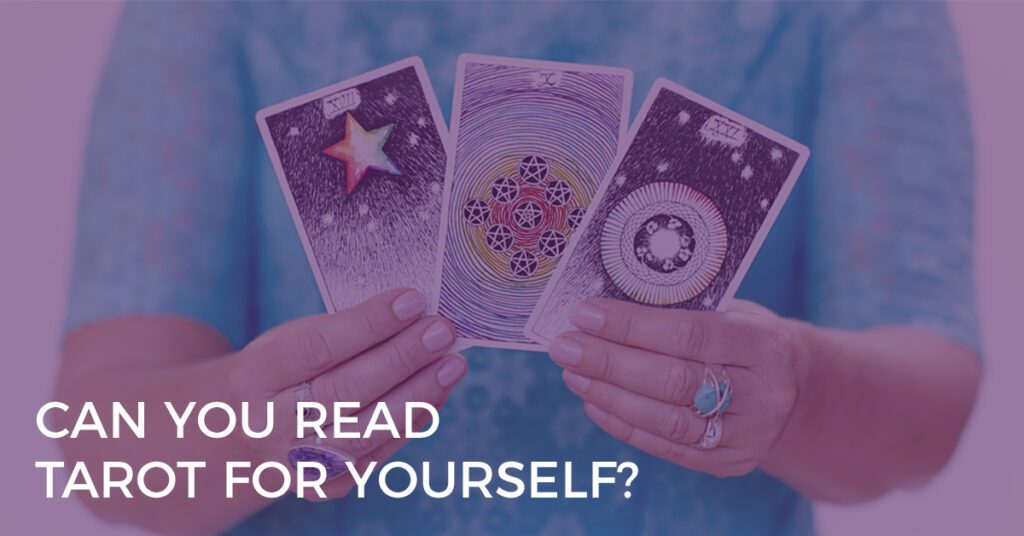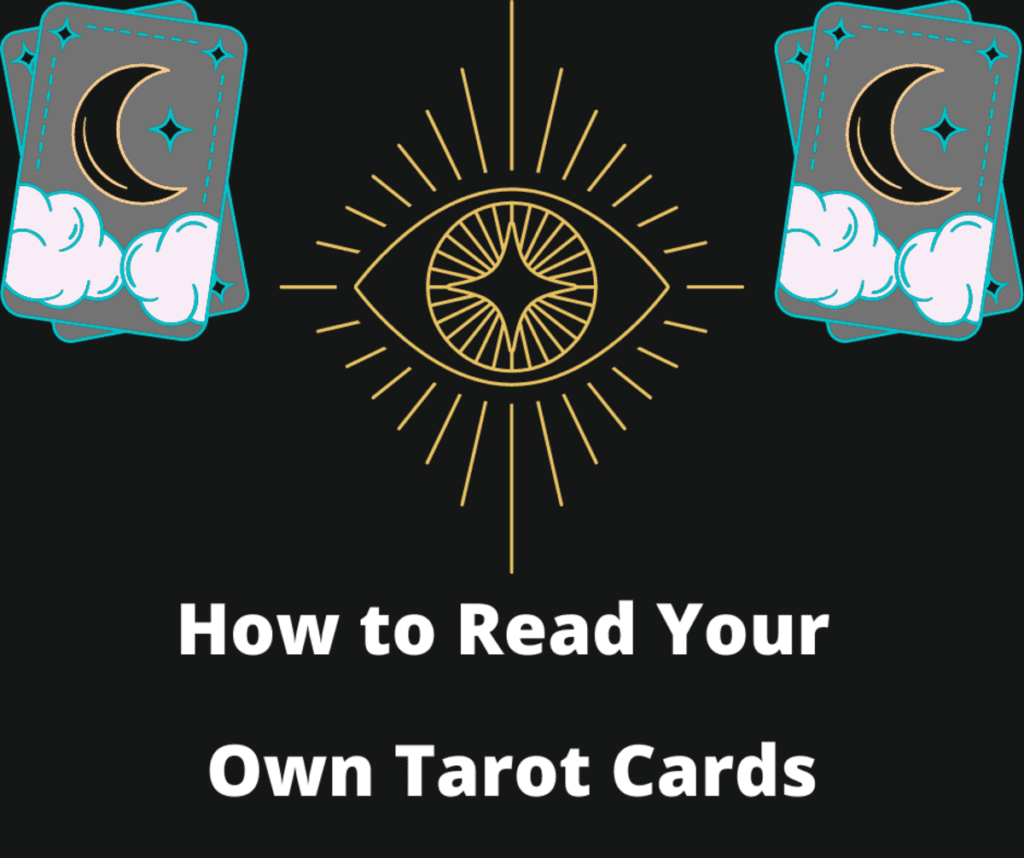Are you curious about the possibilities of reading tarot cards for yourself? Many people believe that tarot readings can provide guidance, clarity, and insight into various aspects of life. However, when it comes to reading tarot for yourself, some skeptics argue that personal bias can influence the interpretation of the cards. In this article, we will explore the question: can you effectively read tarot for yourself?

Understanding Tarot Readings
Tarot readings have become increasingly popular in recent years as a way to gain insight into various aspects of life. Whether you are seeking guidance on relationships, career decisions, or personal growth, the tarot can offer valuable and thought-provoking perspectives. But before diving into the world of tarot, it is important to understand what exactly tarot is and how it works.
What is Tarot?
Tarot is a system of divination that uses a deck of 78 cards to tap into the energy of the universe and provide guidance and clarity. Each card in the deck carries its own unique symbolism, archetypal imagery, and interpretation. The tarot deck is divided into two main sections: the Major Arcana and the Minor Arcana. The Major Arcana consists of 22 cards, representing significant life events and spiritual lessons. The Minor Arcana consists of 56 cards, divided into four suits (Wands, Cups, Swords, and Pentacles) and representing the day-to-day aspects of life.
How Does Tarot Work?
Tarot works by tapping into the subconscious mind, intuition, and the collective unconscious. Through shuffling and laying out the cards in a specific spread, a tarot reader can access and interpret the energies and messages surrounding a particular situation or question. The reader utilizes their knowledge of the cards’ meanings and symbolism, as well as their intuition, to provide insights and guidance.
The Role of Tarot Reader
While the tarot cards themselves hold inherent wisdom, it is the role of the tarot reader to interpret and channel that wisdom to the seeker. A skilled tarot reader helps facilitate a connection between the seeker and their own intuition, offering guidance and insight derived from the cards’ symbolism. The reader acts as a guide, helping the seeker navigate their own thoughts, emotions, and experiences.
Benefits of Reading Tarot for Yourself
Reading tarot for yourself can offer numerous benefits, allowing you to delve into self-reflection, explore personal growth, and gain a deeper connection with your intuition.
Self-Reflection and Personal Growth
One of the greatest benefits of reading tarot for yourself is the opportunity for self-reflection and personal growth. Through the act of drawing and interpreting the cards, you are encouraged to examine your thoughts, feelings, and experiences in a non-judgmental and introspective way. Tarot can help you gain a deeper understanding of yourself, identify patterns and behaviors, and make positive changes in your life.
Convenience and Accessibility
Reading tarot for yourself offers the convenience and accessibility of being able to seek guidance and insight whenever you need it. Instead of relying on outside sources or scheduling appointments with tarot readers, you have the ability to connect with the tarot deck and explore your questions or concerns at any time. This allows for greater flexibility and independence in your spiritual practice.
Connecting with Intuition
Reading tarot for yourself provides a powerful opportunity to strengthen and deepen your connection with your intuition. As you engage with the cards, trust in your own intuition becomes essential. Exploring the imagery and symbolism of the cards can ignite your intuitive senses and offer valuable insights that resonate on a personal level. Trusting your intuition not only enhances your tarot readings but can also have a positive impact on your decision-making skills and overall well-being.
Challenges of Reading Tarot for Yourself
While reading tarot for yourself offers many benefits, it is important to be aware of the challenges that can arise. These challenges primarily stem from biases, subjectivity, and potential misinterpretations.
Biases and Subjectivity
When reading tarot for yourself, it can be challenging to maintain objectivity due to personal biases and subjective perspectives. Your desires, fears, and preconceived notions may influence the interpretation of the cards, leading to a less objective reading. It is important to be aware of these biases and strive for a balanced and impartial approach when conducting self-readings.
Lack of Objectivity
Reading tarot for yourself may also lead to a lack of objectivity, as it can be difficult to distance yourself emotionally from the situation at hand. You may find yourself interpreting the cards based on your own desires or fears, rather than objectively assessing the situation. Seeking external guidance can provide a fresh perspective and help you gain a more objective view of the circumstances.
Potential Misinterpretations
Interpreting tarot cards accurately can be challenging, especially when reading for yourself. It is easy to misinterpret or overlook certain card meanings or symbols, leading to a distorted understanding of the message being conveyed. Additionally, personal biases and emotional attachment may cloud your judgment, further increasing the likelihood of misinterpretation. Developing a solid foundation of tarot knowledge and regularly reflecting on your readings can help mitigate potential misinterpretations.
Tips for Reading Tarot for Yourself
To enhance the effectiveness of reading tarot for yourself, consider implementing the following tips:
Create a Sacred Space
Before diving into a self-tarot reading, it can be helpful to create a sacred space that feels comfortable and conducive to intuitive exploration. This space should be quiet, clutter-free, and infused with positive energy. You can incorporate elements such as crystals, candles, or meaningful objects to further enhance the atmosphere.
Set Clear Intentions
Setting clear intentions is crucial before starting a self-tarot reading. Reflect on what you hope to gain from the reading and what specific questions or areas of focus you want to explore. By setting clear intentions, you guide the energy and direction of the reading, allowing for a more focused and meaningful experience.
Develop a Personal Ritual
Establishing a personal ritual can help create a sense of sacredness and enhance your connection with the tarot deck. This ritual could involve cleansing the cards with incense or saging, reciting an affirmation or prayer, or simply taking a few moments to center yourself before beginning the reading. Find a ritual that resonates with you and incorporate it into your self-tarot practice.
Deepen Understanding of Tarot Symbols
To improve the accuracy and depth of your self-tarot readings, deepen your understanding of tarot symbols. Take the time to study the meanings and symbolism associated with each card, paying attention to the imagery, colors, and numbers. Consider keeping a tarot journal or participating in tarot study groups to expand your knowledge and appreciation of the cards.

Choosing the Right Tarot Deck
Selecting the right tarot deck is a personal and individual process. The deck you choose should resonate with you on a deep level and evoke a sense of connection and comfort.
Finding a Connection
When choosing a tarot deck, it is essential to find a connection with the imagery and symbolism presented. Explore various decks, either online or in person, and pay attention to how the artwork speaks to you. Trust your intuition and choose a deck that resonates with your individual style, preferences, and spiritual journey.
Understanding Tarot System
Different decks may follow different tarot systems or traditions. Familiarize yourself with the particular system a deck adheres to and ensure that it aligns with your personal understanding and interpretation of tarot. Each system may have its own nuances and approaches, so choose a deck that complements your tarot practice.
Considering Visual Aesthetics
The visual aesthetics of a tarot deck can greatly impact your reading experience and connection with the cards. Consider the artistic style, color palette, and overall vibe of the deck. Choose a deck that visually appeals to you and evokes a sense of inspiration and intrigue.
Getting Started with Self-Tarot Readings
Once you have chosen the right deck, it’s time to get started with your self-tarot readings. The following steps will help you establish a solid foundation for your practice.
Cleansing and Energizing the Cards
Before conducting a self-tarot reading, it is important to cleanse and energize the cards. This removes any residual energy and ensures that you are working with a clear and focused deck. Methods for cleansing the cards include smudging with sage, placing them in moonlight or sunlight, or using visualization techniques to release any stagnant energy.
Shuffling and Spreading the Cards
Once your deck is cleansed and energized, begin by shuffling the cards. This process allows you to infuse your energy with that of the deck and creates a connection between you and the cards. As you shuffle, focus on your intention for the reading. When you feel ready, spread the cards face down and choose a spread or layout that suits your needs. Common spreads include the three-card spread, the Celtic Cross, and the past-present-future spread.
Formulating Meaningful Questions
Articulating clear and meaningful questions is crucial for a focused and insightful self-tarot reading. Take the time to reflect on your intentions and the specific areas of your life or situations you wish to explore. Ask open-ended questions that encourage deeper introspection and guidance from the cards. Avoid questions that are too vague or closed-ended, as they may limit the depth of the reading.

Interpreting Your Tarot Readings
When it comes to interpreting tarot readings, trust in your intuition and engage with the cards’ symbolism. The following tips will help you navigate the interpretation process with confidence.
Trusting Your Intuition
Your intuition is a valuable tool when interpreting tarot readings. Trust your initial impressions and gut feelings when examining the cards. Allow your intuition to guide your understanding of the symbolism and message being conveyed. Over time, as you become more confident in your abilities, your intuition will become even stronger and more reliable.
Understanding Card Positions
The positions of the cards within a spread carry specific meanings and nuances that should be taken into account during interpretation. For example, a card in the past position may represent previous experiences or influences, while a card in the future position may indicate potential outcomes or opportunities. Familiarize yourself with different spread layouts and the significance of each card position to enhance your interpretation skills.
Considering Reversed Cards
Reversed cards, when a card appears upside-down during a reading, add additional layers of meaning to the interpretation. A reversed card may indicate a blockage, a need for further introspection, or a shift in energy. Pay attention to reversed cards and consider their implications within the context of the reading. However, don’t solely rely on reversed cards for interpretation, and always trust your intuition.
Journaling and Recording Your Readings
Journaling and recording your tarot readings offers numerous benefits and helps you track your progress. Consider incorporating these practices into your self-tarot routine.
Benefits of Journaling
Journaling provides a space for reflection and deeper exploration of the messages received during a tarot reading. By writing down your thoughts, feelings, and interpretations, you create a tangible record of your journey and can track patterns, progress, and personal growth over time. Journaling also allows you to revisit past readings and gain new insights from a fresh perspective.
Recording Card Meanings and Interpretations
In addition to journaling, it is valuable to create a reference guide or tarot journal where you record the meanings and interpretations of the cards. As you become more proficient in tarot reading, you may want to develop personalized interpretations based on your own experiences and connections to the cards. Having a record of these interpretations can support your future readings and deepen your understanding of the cards’ symbolism.
Reflecting on Patterns and Progression
Regularly reflecting on your tarot readings and the patterns that emerge can provide valuable insights into your personal journey. Notice recurring themes, symbols, or messages across multiple readings. Identify areas of growth, challenges, or lessons that may be unfolding in your life. This reflection helps you gain a more holistic perspective and encourages personal development.

Utilizing Tarot Spreads for Self-Readings
Different tarot spreads can be utilized to explore specific questions or aspects of your life. Experiment with various spreads and find the ones that resonate with you and provide the most accurate and insightful readings.
One-Card Readings for Daily Guidance
One-card readings are a simple and quick way to gain daily guidance and insights. Select a single card from the deck, focusing on a specific question or intention. The chosen card offers a concise message or theme to guide your day and provide a focal point for reflection and decision-making.
Past-Present-Future Spreads for Life Overview
For a broader perspective on your life journey, consider using a past-present-future spread. This three-card spread provides insight into your current situation, past influences, and potential future outcomes. It allows you to see the progression of events and gain a deeper understanding of how your past experiences shape your present and future.
Celtic Cross Spread for In-Depth Insights
The Celtic Cross spread is a classic and comprehensive spread for in-depth exploration of a specific question or situation. This ten-card spread provides a detailed analysis of various aspects, including the immediate influences, hidden factors, advice, and potential outcomes. While it may require more time and practice to master, the Celtic Cross spread offers profound insights and a thorough examination of the energies surrounding your question.
Knowing When to Seek External Guidance
While reading tarot for yourself can be enlightening and empowering, there are instances when seeking external guidance is advisable.
Recognizing Personal Biases and Blind Spots
Despite our best efforts, personal biases and blind spots can still influence our interpretations while reading tarot for ourselves. We may have a limited perspective or be unable to see alternate possibilities. Seeking the objective insights of an experienced tarot reader can shed light on areas we may have overlooked or bring fresh perspectives to the table.
Complex or Sensitive Situations
In complex or sensitive situations, seeking external guidance can provide clarity and support. When emotions are running high or the stakes are significant, it can be challenging to maintain objectivity and interpret the cards accurately. A tarot reader can offer guidance with compassion, objectivity, and a broader perspective, helping you navigate complex situations and make informed decisions.
Validation and Confirmation
Sometimes, we simply seek validation or confirmation for our own intuitive insights. Working with an external tarot reader can serve as a way to validate and confirm the messages you have received through your own readings. Hearing a different perspective or an independent interpretation can enhance your trust in your intuition and provide the confidence needed to move forward.
In conclusion, reading tarot for yourself can be a rewarding and enlightening practice. By understanding the basics of tarot, recognizing the benefits and challenges, and implementing tips and techniques, you can enhance your self-tarot readings and deepen your connection with the cards. Remember to trust your intuition, remain open to interpretation, and seek external guidance when necessary. Tarot has the power to guide, inspire, and support your personal growth journey – so grab your deck, embrace the magic, and embark on a transformative exploration of self.

